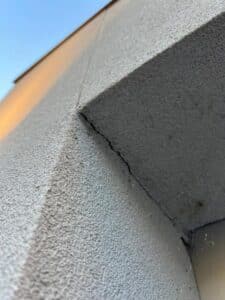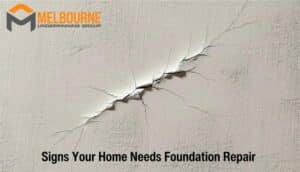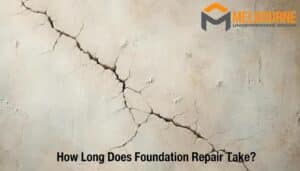
Spotting signs such as cracks in walls, uneven floors, doors or windows that stick, water damage, and sagging floors is essential for determining the need for underpinning your business property. Such warnings symbolise underlying problems that require urgent concrete underpinning.
In this blog, we’ll discuss each of these signs to understand better how to identify them.
Cracks in Walls or Ceilings
Cracks in walls or ceilings are alarming indicators that your home might require underpinning. In Australia’s varied climate and geological conditions, homes are subjected to unique stresses that may compromise their structural integrity.
Cracks can signify settling or movement in the foundation, attributing to natural shifts in the soil or extreme weather variations. Ignoring such signs could lead to severe consequences, necessitating a swift assessment and action to safeguard your property. Doing so ensures it will remain secure, durable, and resilient in the future.
Uneven Floors or Sloping Foundations
Uneven floors or sloping foundations indicate a property’s urgent need for underpinning. Australia’s diverse geographical conditions impose substantial stress on home foundations, leading them to crack or settle. An uneven floor not only compromises foundation stability but also poses potential risks to occupants’ safety.
Timely underpinning interventions are crucial in preventing further degradation. It bolsters the property’s resilience and ensures it withstands the challenging environment. Such preventative measures are instrumental in maintaining a home’s structural integrity and overall longevity.

Doors or Windows That Stick or Are Difficult to Open
Doors or windows that stick or prove difficult to open often herald underlying structural issues necessitating property underpinning. Such complications typically stem from foundation shifts or irregularities, influencing the alignment of doors and windows. These signs are common in properties enduring varied environmental pressures.
Proactive underpinning serves to mitigate further deterioration. This brings back the stability and functionality of doors and windows while preserving the overall robustness and resilience of the property.
Water Damage or Leaks in the Basement or Crawl Space
Water damage or leaks in the basement or crawl space are common signs that a property may require urgent underpinning. Such conditions often signify compromised foundation integrity. Persistent water issues can lead to mould, decay, and further deterioration.
Effective underpinning addresses these foundational vulnerabilities. It also enhances the property’s resistance against water-related damages, ensuring sustained structural soundness. When choosing an underpinning contractor it’s important to let them know about these issues so they may make an informed assessment.
Sagging or Bouncing Floors
Finally, sagging or bouncing floors signal a need for underpinning. These symptoms frequently indicate compromised foundational support resulting from soil movement, moisture variations, or general wear and tear. Such inconsistencies in flooring not only disrupt everyday activities but also pose potential safety hazards.
Undertaking underpinning procedures is paramount to rectifying these issues, stabilising the foundation, and restoring uniformity and firmness to the floors.






